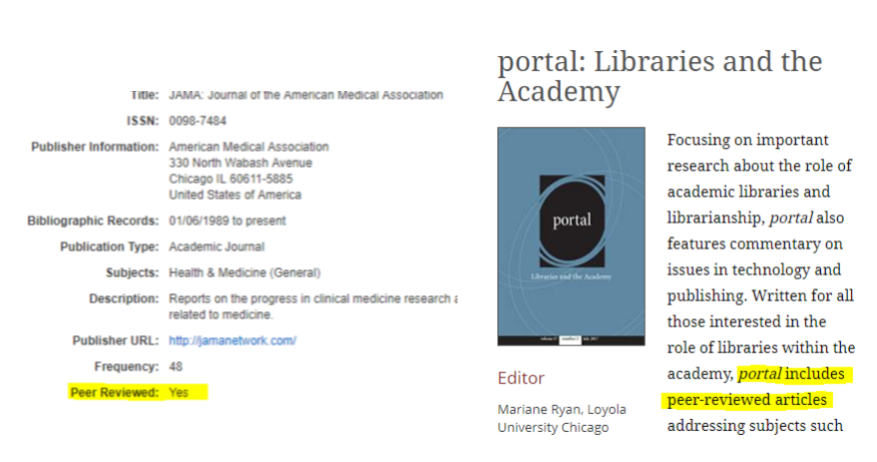Peer Review: Journal Articles
How to know if an article is peer reviewed:
The review process described in that short video is part of what makes peer-reviewed articles particularly unique. Since they are reviewed by scholars and experts in the field they cover, there are two layers of authority at play: the original authors' authority (usually based on their research), and the reviewers' authority (based on their established credentials in the field).

This doesn't mean that peer-reviewed articles are infallible (take a look at this famous example of a peer-reviewed study being retracted) or that they are always the best sources to use, but it does generally signify that the information presented has been thoroughly researched and reviewed.
When you need to determine whether an article would be considered peer-reviewed for an assignment, you can look for three key characteristics:
- The article was written by scholars or subject matter experts, like professors, doctors, lawyers, researchers, or other people who demonstrate their expertise in a field relevant to the topic at hand.
- The article has formal citations. The actual format (AMA, APA, Chicago, MLA, etc.) doesn't matter, as long as you are clearly able to see which sources the article's authors consulted. Informal citations like quotes or general references are used primarily in popular sources like newspapers and magazines, whereas peer-reviewed journal articles take a much more rigid, formal approach to citation.
- The journal in which the article was published is peer-reviewed. In some library databases, you can click on the title of a journal to see if it is listed as peer-reviewed. You can also always Google the title of the journal to see if it has a website that identifies it as peer-reviewed.

Quick Check: